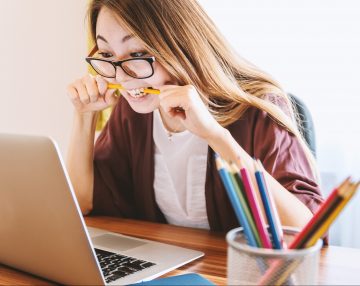 Edith Lando VLC is proud to be awarding grants for the development of two virtual makerspaces:
Edith Lando VLC is proud to be awarding grants for the development of two virtual makerspaces:
The first grant is being awarded to Dr. Keri Ewart’s Inclusive Virtual Immersive Makerspace Experience. The second is going to Dr. Melanie Wong for her project Virtual Reality Makerspace. Please read on for details of each of these grants.
Grant recipient: Dr. Keri Ewart
Funding will go towards developing a virtual immersive and inclusive makerspace intended to be accessed by educators, students, teacher candidates, instructional designers, and leaders from underserved and underrepresented communities, with a special focus on supporting rural and remote education.
The purpose of this website in its first phase, is to model the liberatory design and implementation of inclusive and sustainable makerspaces in any environment. Utilizing equity, diversity, inclusion, decolonization, and anti-racism frameworks, this immersive and inclusive virtual makerspace website will provide access to resources, challenges and provocations, critical question prompts, lesson and unit plans, assessment tools, and design strategies and frameworks to ensure the continued awareness and understanding of inclusive education.
In the second phase of this project, we will create virtual and augmented reality experiences, accessible to all users from around the world with content from and in support of underrepresented and underserved communities. Using a self-designed maker-inspired avatar, this space will foster a collaborative and inclusive community of makers that will make in all contexts and virtual environments.
Learn about the outcomes of Dr. Ewart’s grant here:
Dr. Keri Ewart Report – Virtual Inclusive Makerspace Project
Grant recipient: Dr. Melanie Wong
Makerspaces are increasingly becoming popular in Kindergarten to Grade 12 (K-12) contexts across North America. However, how this practice is taken up in classrooms varies. Often teachers are unsure about what makerspaces might look like and how this translates into practice. In particular, teachers might wonder how they can adjust these “physical spaces” to engage all learners.
The following project aims to create a Virtual Reality (VR) makerspace. This VR makerspace has two objectives:
-
To encourage K-12 educators to engage in critical conversations with regards to what a makerspace might look like.
-
To encourage K-12 educators to consider how they might set up physical spaces to engage our K-12 students in intentional and meaningful learning experiences.
In addition to supporting graduate students’ learning at UBC, the VR makerspace will be a great tool for schools across the country to engage teachers in makerspace professional conversations.